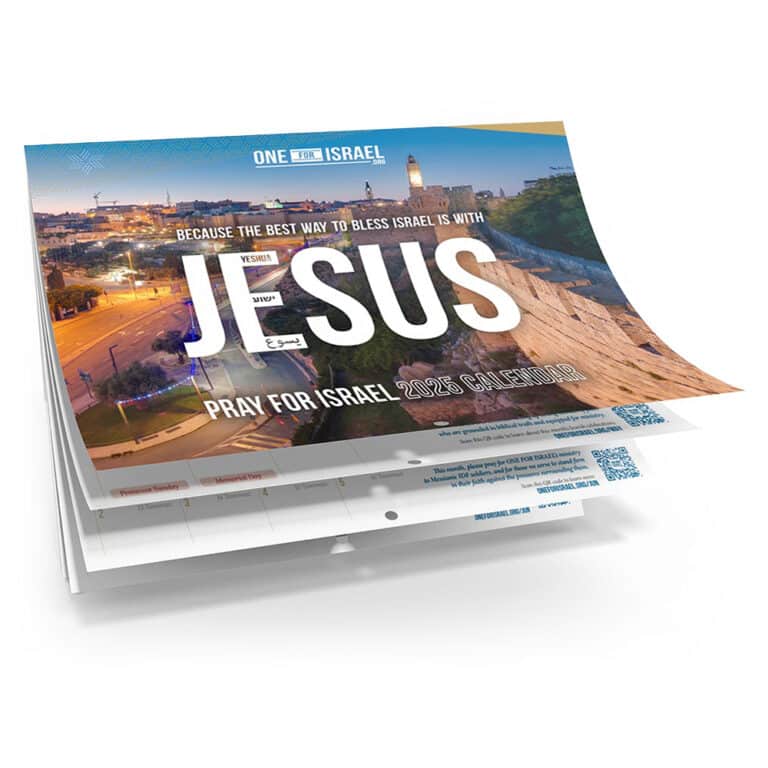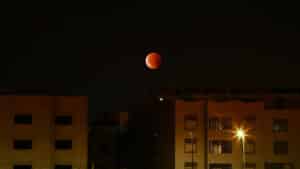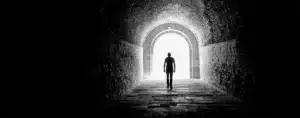“The achievements and witness of Jewish believers during the Holocaust and especially in the Warsaw Ghetto are essentially unknown to most present day Jewish believers. We stand on the shoulders of these heroes of the Holocaust—the Jewish believers of the Warsaw Ghetto—and their story, as much or as little as we know, must be told.” – Dr. Mitch Glaser, Heroes of the Holocaust: Poland, the Warsaw Ghetto and Yeshua.1
Here are some key gleanings from his research in honor of Israel’s Holocaust Memorial Day.
On 27th of the Jewish month of Nisan, Israel marks its “Yom haShoah”, or “Yom HaZikaron laShoah ve-laG’vurah” which means “Memorial Day of the Holocaust and of Heroism”. Though the rest of the world had Holocaust Remembrance Day in January when Auschwitz was liberated, in Israel the date was chosen to be close to the anniversary of the Warsaw Ghetto uprising. There were 28 days of bitter fighting as the Jewish prisoners in the ghetto courageously rose up and rebelled against the Nazis. The ghetto was eventually destroyed, but the heroism of this event is a tremendously important part of Jewish history.
However, almost unsung in Jewish history are the stories of the thousands of Jews who believed in Yeshua at this time. Stories of courageous gentile believers such as Corrie Ten Boom and Deitrich Bonhoeffer are well known, but on this day that we remember the Holocaust and its heroes, it’s time to introduce you to some Jewish believers who experienced the horrors of the Holocaust.
Did you know there were about a quarter of a million Jewish believers at the time of the Holocaust? And that several thousand were trapped to starve and die in the Warsaw Ghetto along with their brethren? Here are some of their stories…
Rachmiel Frydland
Former rabbinical student and Messianic Jewish teacher, Rachmiel Frydland, was one of the very few Jewish believers who endured the hell of the Warsaw Ghetto and lived to tell the tale:
“I had been a believer for two years when the war broke out. Warsaw shook under more and more bombs. Food became scarce and the electricity and water supply failed. Along with several other young Jewish believers in the Messiah, I went to help defend the city. Because I did not want to use a gun, I was given physical work. Within a month the city was crushed and the triumphant Germans marched in. I decided to leave the city and seek farm work with friends to the north. With a certificate in hand, given to me by my pastor, I set out across the burning city. Reaching the outskirts, I was stopped by a soldier. “Are you a Jew?” he demanded. Without a word, I handed him my certificate. He looked at it and then spat out: “Yes, but you are still a Jew! ” He seized a shovel and slammed it into my back, knocking me into a ditch. There I was ordered to join fellow Jews who were digging graves for dead horses. It was my first taste of Nazi brutality, but actually mild in comparison with what awaited so many others. That night I escaped in the darkness and resumed my journey. My friends received me gladly and fed me, but in a short time the new restrictive laws against Jews forced me to leave. Returning to Warsaw, I discovered that one of my sisters had died of typhus and that a wall had been built around the Jewish section.”3
Starting in November 1940, almost 500,000 Jews were inhumanely crammed into a small walled area in Warsaw with very little food and sanitation. About 45,000 Jews died the following year due to overcrowding, hard labor, starvation, and disease. “Natural death in the street from hunger, exhaustion, exposure, heart attack, or infectious disease had become the rule.”4 During 1942, most were transported off to death camps, leaving about 60,000 Jews in the ghetto. Charles G. Roland explains in his book cataloguing conditions in the Ghetto, that “By 1941, the official ration provided… 184 calories for Jews in the ghetto.” Agreeing that it is impossible to survive for any length of time on so little, Roland explains that the Jewish people were able to continue for two years in those conditions through “Provision of food to the poor… by several social welfare agencies, direct smuggling of food by hungry Jews, increased production of food and, most commonly, the purchase on the black market of smuggled food.”5
Frydland continues:
“In late 1944, by hiding in cemeteries, deserted churches, and the homes of fearful friends, I was one of the few surviving Jews in Warsaw outside the ghetto. In that enclosure were 5,000 Jews, the last of Warsaw’s original 500,000. By God’s enabling,
I secretly slipped into the ghetto and was able to speak comfort to a few of the Jewish believers still alive. Other Jewish brethren heard the message and believed in Messiah Jesus.
My friends in the ghetto insisted that I leave. They said that if God had preserved me thus far, I would be a witness to the woes they now experienced. At the end of the war, I could tell the story of their suffering. I was probably one of the last to leave the ghetto. It was only shortly afterward that the Germans obliterated the entire Jewish area.”
Dr. Ludwig Hirszfeld
Dr. Hirszfeld was another Jewish believer, who had come to faith in his twenties. He reflects in his book, “The Story of a Life”, that,
“There were many people who were baptized in the Quarter—old and young, sometimes whole families. Some of my students were among them, men and women, and I was often asked to be the godfather. What motives drove them to the baptism? They never received any benefits from it. The change of faith did not entail any change in their legal status. No, they were attracted to it by the appeal of a religion of love. They were attracted by the religion of the nation to which they felt they belonged. They were attracted to the religion to which there was no room, or least there should not be any room, for hate. Jews are so weary of the atmosphere of universal antipathy.”
Hirszfeld gives us a window into the extraordinary overcoming spirit of the Warsaw Ghetto heroes of faith, while living under horrific circumstances;
“Gloria in Excelsis Deo. Glory to God in the highest and peace and goodwill to men. Grzybowski Square and Twarda Street disappear. The excited and feverish crowd of the poor also disappears. We are immersed in the coldness and atmosphere of the place of worship.”
There is a throng of us they are lost in prayers. We can no longer see the killers and the haters—we are in the company of the enraptured. We are united in a sentiment of higher communion…
“…Why should I love those monstrous men? For no reason. Love is a state of the spirit. Everybody possesses it, but sometimes in a dimmed and muffled state. But, it is as much an instinct as the hunger for life, as the joy of living. Love is a delight as much as rapture amid the starry silence and the transport of joy of the dancing stars. There are no small things here—everything emanates from the spirit. A heavenly music is heard. And in this harmony the soul bends down sobbing in humiliation. And it embraces the world in rapture, it floats in oblivion. Horrible people, horrible things disappear: all resonates with the Great Harmony.”
A great light in a dark place
It might seem surprising that there were so many Jewish believers at that time, but there had been a significant surge in attempts to reach the Jewish people with the gospel in Eastern Europe in the preceding decades. Glaser remarks that “Warsaw was actually a hotbed of Messianic activity”. The historical book “Sefer Milhamot ha-Getaot” (Book of the Ghetto Wars) by Yitzhak Zuckerman and Mošē Basōq, confirms that there were indeed a great many Jews who believed in Jesus in the Warsaw Ghetto, and some testimonies characterised them very positively, at one point noting that, “Almost all of them were intellectuals”.
Though not a believer, Hanna Krall quotes these lines in her Polish short story “Salvation”:
“When the Germans cleared the church of all the Christian Jews, there was only one Jew left of the church: the crucified Jesus… Jesus came down from the cross and called (to the painting) of his mother: ‘Mame, kim…’ This means in Yiddish: ‘Come Mama.’ She (came down and) went to the Umschlagplatz.”
Krall describes this as one of the numerous, poignant Jewish – Christian anecdotes told in the Ghetto.
It seems fitting to end with some powerful words from Rachmiel Frydland:
“From my harrowing experience, I see that men who reject Messiah are capable of bringing hell on earth. But surely God has not abandoned mankind. He has a plan for every person who will trust Him. The Bible, which has guided and sustained me thus far, promises that peace and justice will fill the earth only when the Prince of Peace returns. He is the only hope of mankind, and I know that He will come, because He has proved His great love and His miraculous power to me.”
To read more of Dr Mitch Glaser’s work on this subject, click here
1. “Heroes of the Holocaust: Poland, the Warsaw Ghetto and Yeshua” by Dr. Mitch Glaser, President Chosen People Ministries – a presentation to The Lausanne Consultation on Jewish Evangelism North America March 5-7, 2012.
2. Peter F. Dembowski calculates that there were 5,000 to 6,000 Jewish believers living in the Ghetto at its height. Peter Dembowski, “Christians in the Warsaw Ghetto: An Epitaph for the Unremembered”, University of Notre Dame Press, 2005, p.68
3. From the personal testiomony of Rachmiel Frydland in the biographies section of www.messianicassociation.org
4. Charles G. Roland, “Courage Under Siege: Disease, Starvation and Death in the Warsaw Ghetto”, New York: Oxford University Press, 1992, ch 6, p.99-104.
5. Ibid
















